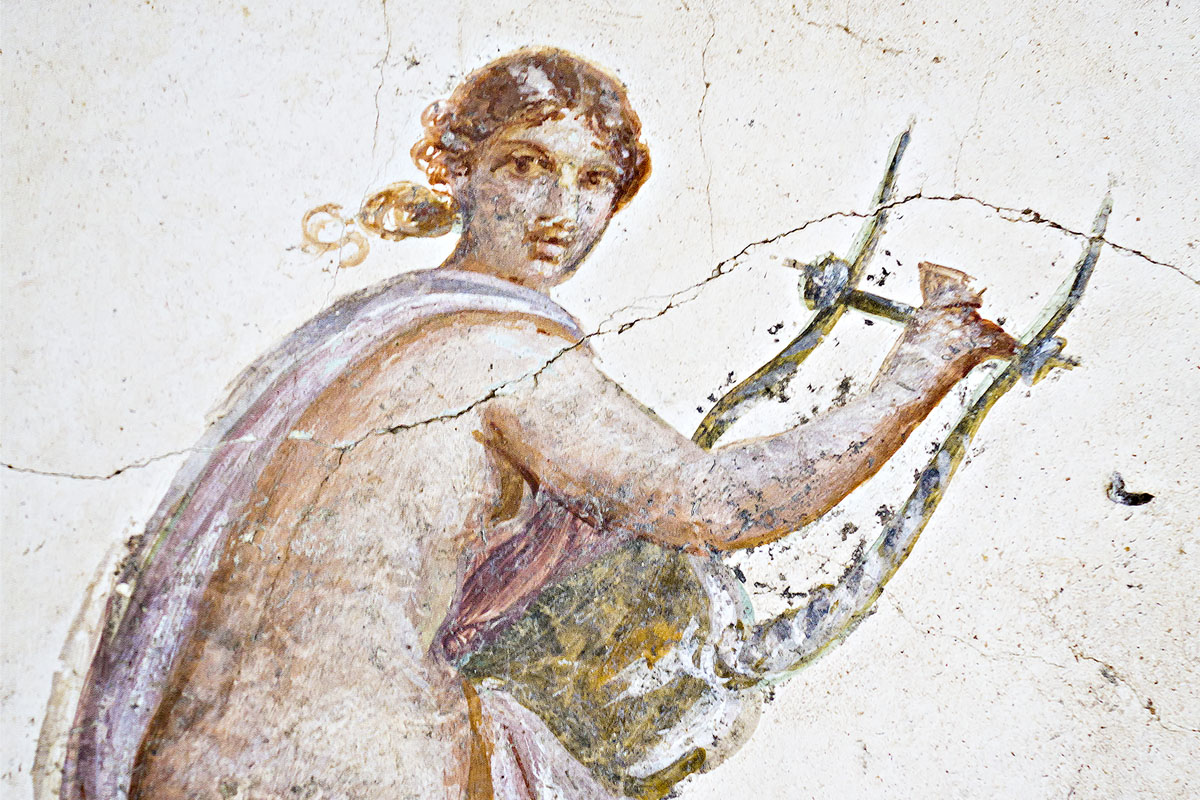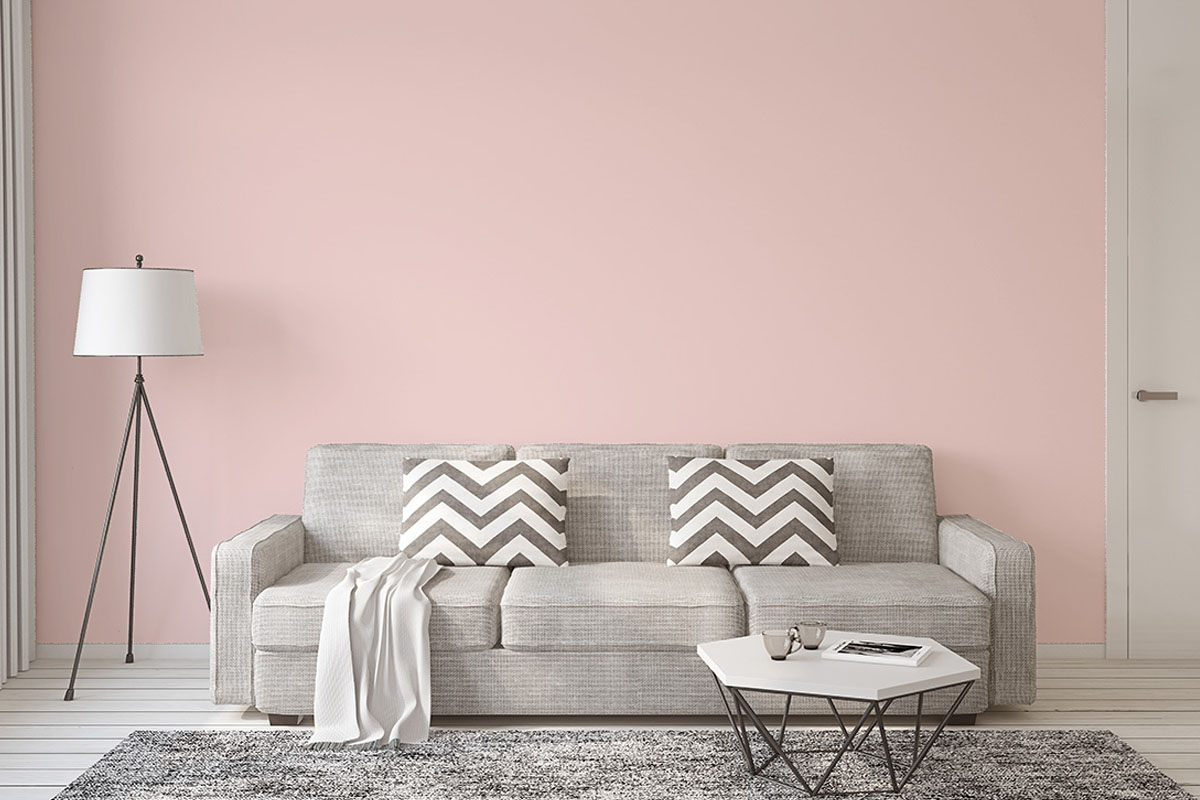Beige
Ovinia
Oppius
In Pompeji:
The name ‘beige’ is derived from the Roman province of Baetica, an area which roughly corresponds to present-day Andalusia. Baetica was famed for its wool, which was beige in colour before being bleached. Whereas clothing in this natural colour was generally viewed as a sign of a humble existence in ancient Rome, beige garments are now synonymous with the utmost sophistication. In antiquity, a special mixing and painting technique was required to apply this colour to a wall, with some painters famed for their mastery of this technique. As beige shades are also found in the form of natural stone, we encounter them as frequently in the streets of Pompeii as in modern-day apartments in Paris and New York.


IN THE MODERN AGE:
Nowadays, beige tones are associated with understated elegance. Michelle Obama wore beige for her first state visit as First Lady – and was dressed impeccably.
IN THE HOME:
Beige tones exude a natural, cosy atmosphere. They bring warmth and comfort into a room, although the effects are always slightly different. After all, the palette ranges from the wall colour cream through to pastel shades, as well as sandy and earthy hues. In other words, not all beiges are alike. Beige is also ideal for balancing out a combination of rich colours in the same room, such as green, yellow and red.

Beige

In Pompeji:
The name ‘beige’ is derived from the Roman province of Baetica, an area which roughly corresponds to present-day Andalusia. Baetica was famed for its wool, which was beige in colour before being bleached. Whereas clothing in this natural colour was generally viewed as a sign of a humble existence in ancient Rome, beige garments are now synonymous with the utmost sophistication. In antiquity, a special mixing and painting technique was required to apply this colour to a wall, with some painters famed for their mastery of this technique. As beige shades are also found in the form of natural stone, we encounter them as frequently in the streets of Pompeii as in modern-day apartments in Paris and New York.

IN THE MODERN AGE:
Nowadays, beige tones are associated with understated elegance. Michelle Obama wore beige for her first state visit as First Lady – and was dressed impeccably.

IN THE HOME:
Beige tones exude a natural, cosy atmosphere. They bring warmth and comfort into a room, although the effects are always slightly different. After all, the palette ranges from the wall colour cream through to pastel shades, as well as sandy and earthy hues. In other words, not all beiges are alike. Beige is also ideal for balancing out a combination of rich colours in the same room, such as green, yellow and red.
Our shades of Beige
Ovinia

Ovinia:
The gens Ovinia was a plebeian family that nonetheless produced many senators. One such senator was Quintus Ovinius, who took charge of the wool-spinning workshops in Egypt. Emperor Augustus felt that this was disgraceful conduct and not appropriate for a senator – so he had Ovinius executed. This shade remembers him, as the notion that beige is a purely feminine colour is a long-outdated cliché.
Oppius:
Gaius Oppius was one of Caesar’s most important advisors. He acted as Caesar’s deputy in Rome, was an influential mediator in the civil war with Pompey and continued as the right-hand man to Augustus, Caesar’s successor. His health was too fragile for him to undertake active service in Gaul, but Oppius was instrumental elsewhere. This subtle beige tone reminds us that there is often more strength in serenity.
Oppius

Our shades of Beige
Ovinia

Ovinia:
The gens Ovinia was a plebeian family that nonetheless produced many senators. One such senator was Quintus Ovinius, who took charge of the wool-spinning workshops in Egypt. Emperor Augustus felt that this was disgraceful conduct and not appropriate for a senator – so he had Ovinius executed. This shade remembers him, as the notion that beige is a purely feminine colour is a long-outdated cliché.
Oppius

Oppius:
Gaius Oppius was one of Caesar’s most important advisors. He acted as Caesar’s deputy in Rome, was an influential mediator in the civil war with Pompey and continued as the right-hand man to Augustus, Caesar’s successor. His health was too fragile for him to undertake active service in Gaul, but Oppius was instrumental elsewhere. This subtle beige tone reminds us that there is often more strength in serenity.
Diedenhofener Straße 1
D-54294 Trier
bella-casa@mille-deco.com
Colours of Pompeii is a brand of premium wall paints. The range is inspired by the colours that one would once have seen on a stroll through Pompeii. Each colour is timeless and modern – and can be combined in a variety of ways.
